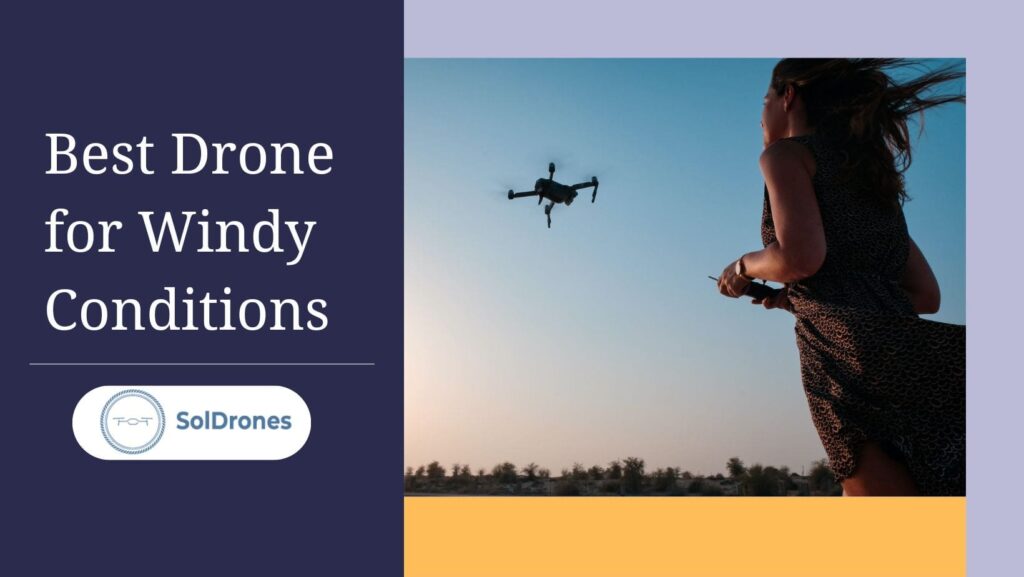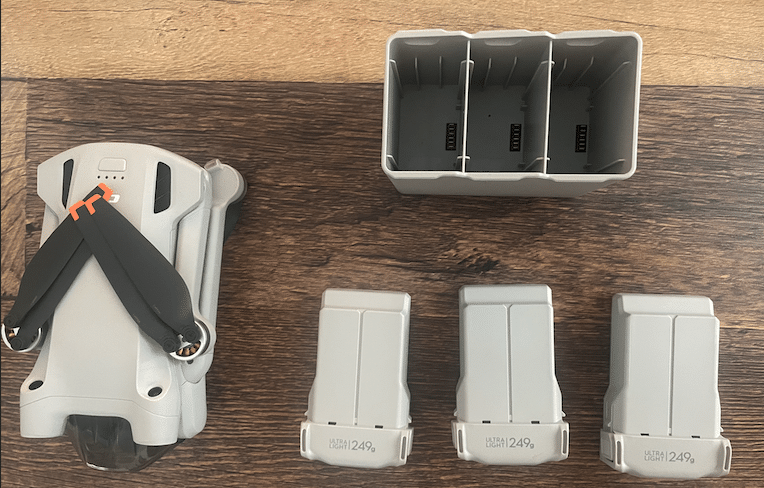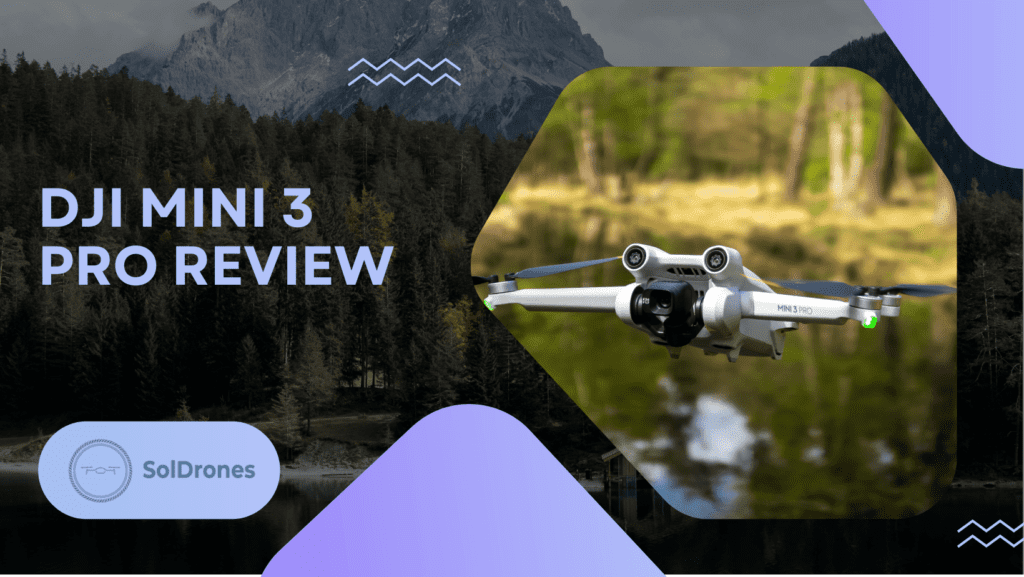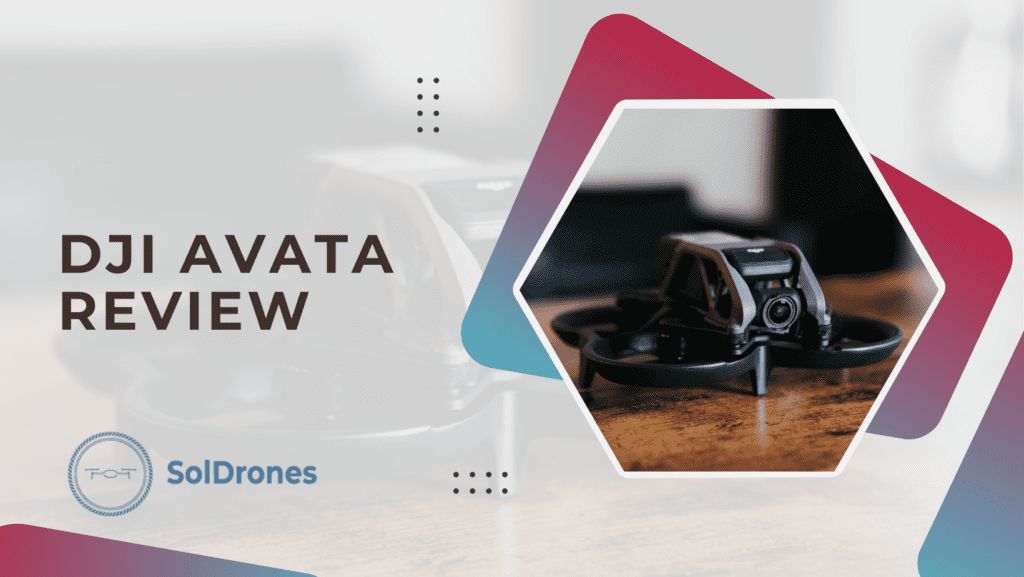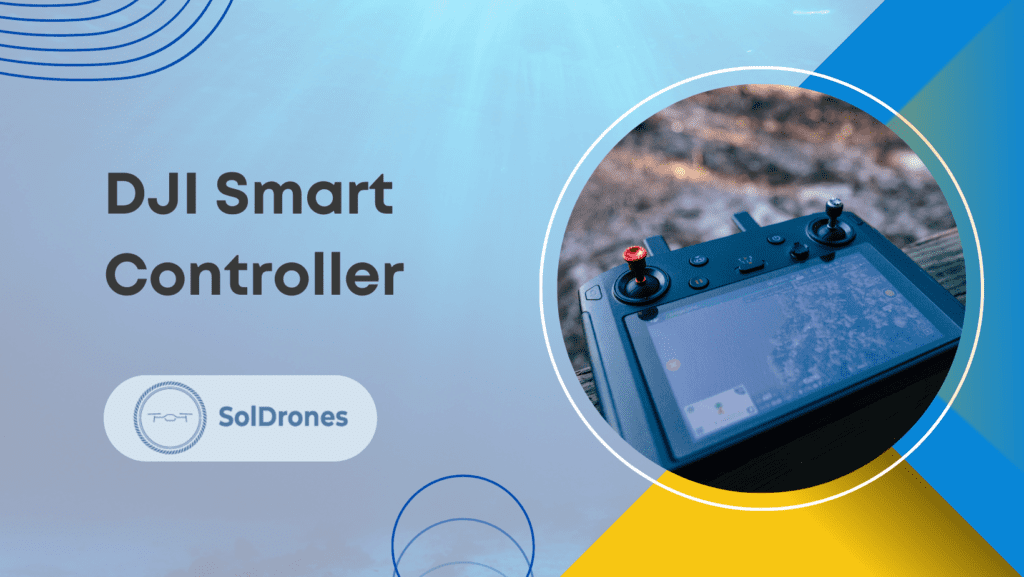Watching your drone take off is exciting, but worrying it might not come back is scary.
We’re here to guide you so you can use your drone in the wind easily and without worry.
Here are our top choices for drones that do well in the wind:
- DJI Mavic Air 2: This drone is good in the wind as it’s heavy and keeps a stable flight. It lets you shoot great 4K video and 8K quick clips.
- Autel Robotics EVO Lite+: This one flies strong and high – records 6K film and stays up for a long 40 mins.
Read on to find everything you need to know about flying in windy conditions.
- Enhanced Imagery: Capture 48MP photos and smooth 4K/60fps videos with ease.
- Extended Range: Enjoy up to 10 km video transmission with OcuSync 2.0.
- Longer Flights: Achieve up to 34 minutes of flight time for more epic shots.
- Smart Tracking: Utilize features like Spotlight 2.0 and ActiveTrack 3.0 for dynamic shots.
Wind and Its Impact on Drones
Flying drones in strong winds needs a tough and steady craft for smooth and safe trips.
Wind speed is measured in knots, and the safe maximum speed to fly drones is often 10-20 knots, depending on the drone’s capabilities.
Read more to find out about the challenges of flying when it’s windy:
1. Loss of Stability
Wind can mess with your drone, making it hard to keep still. It may stray or not stay at the same level.
This can cause it to fly wildly. Light and less aerodynamic drones are more likely to struggle – often crash in strong wind.
2. Reduced Control
Strong blasts of air can make it hard for pilots to steer their drones – mainly when they go up, come down, or move in tight spots.
You need skill to manage these situations, so it’s important to practice and prepare for these kinds of winds.
3. Risk of Damage
Flying in strong wind is hard because the wind can knock your drone into stuff, causing crashes.
If a drone hits its propellers, motors, or camera arms, it could break. Fixing these parts can be pricey. At times, the damage is so bad you might need to throw it out.
4. Drain on Battery Life
When it’s windy, drones must push more to stay in place. This tough effort drains the battery much faster. So, you might have a shorter flight and can’t travel as far as you’d like.
Keep an eye on your drone’s battery to avoid it running out mid-flight. Plan your flights wisely to avoid a sudden stop from a dead battery.
5. Safety Concerns
Flying a drone when it’s windy can be risky for you and others if you’re not careful. High winds can push your drone away and maybe into folks, homes, or other things. This can get you into trouble and cause damage or harm.
For those who love to fly drones, strong winds require more care and skill. Always check the wind speed before flying, and steer clear of strong blasts. Use drones made to handle wind resistance to help you in tough situations.
Make safety number one in all your flights and stick to the best ways to cut down dangers in windy weather.
Fearless Drone School gives 9 tips on flying drones when it’s windy in this video:
Video Credit: Fearless Drone Academy
Wind Resistance in Drones
Wind resistance is a key part of how well a drone can deal with strong gusts. A drone with good wind resistance will keep stable and go where it’s meant to.
Picking a drone designed to do well in windy conditions will give you peace of mind.
1. Improved Stability
Wind-resistant drones come with neat gear, like gyroscopes and sensors. These keep the drone steady and on its path, fighting the wind’s push so the drone doesn’t drift or get off course.
Unlike simple, cheap drones, which can drift away easily, drones made for the wind keep their path well.
2. Improved Control
High-end drones often have cool tech to help them fly right, even in strong winds. Big drones are usually better with wind because they’re heavy and stay steady.
Lightweight drones might struggle, but some have special features to help them fly well. These features let drivers fly with accuracy and confidence.
3. Increased Durability
Wind-resistant drones are built to last. They’re often equipped with strong materials that can take a hit, so they won’t break easily if they bump into things in the wind or drop to the ground.
Investing your money in a wind-resistant drone can save you money since it’s not easy to get damaged and won’t need expensive fixes.
4. Extended Flight Time
Wind-resistant drones have strong motors that help them fly in hard weather. This way, they can stay in the air longer, letting you have more fun.
You won’t fret about a dead battery ending your flight soon.
5. Safety and Reliability
Choosing a drone that can handle strong wind means you’re choosing one that’s safe and won’t break easily. These drones are made tough so you won’t have to worry about them crashing or getting damaged.
Plus, reliable drones that do well in the wind also come with smart safety features like auto-return and dodging blocks to help keep your flight smooth, even when the wind picks up.
Flying a drone when it’s windy might feel tough, but with the right gear and careful steps, you can safely and with ease complete your aerial photography project or just have a good time even when the wind picks up.
Factors to Consider When Picking a Drone for Windy Conditions
When choosing a drone that can handle wind well, these are the key factors to think about:
1. Wind Resistance Rating
When picking a drone for windy conditions, look at its wind strength score. This score shows how good the drone is in strong winds. Check for scores in Beaufort scale or miles per hour (mph). A bigger score tells you the drone can stay steady in strong winds.
Not all drones tell you their wind strength score. But many makers will let you know how their drones do in various weather conditions, including wind. Always look up and compare this information to make sure you choose a drone that does well in windy settings.
2. Size and Weight
Bigger, heavier drones handle the wind better. They have strong motors and big propellers to stay steady when the wind blows hard. Yet, their big size means they’re not as easy to carry or fly in small spots. Think about where you’ll fly and pick a drone right for that place.
Small drones, though, are more likely to be pushed around by wind and might not fly well in windy conditions. Keep this in mind when choosing a drone for windy places.
3. Stability and Control Features
Search for drones with top-notch balance and control tech, like gyroscopes, accelerometers, barometers, GPS tracking, and obstacle avoidance. These tools can keep your drone stable in gusts and avoid accidents.
Some drones might also have a fast mode to better face strong winds.
4. Durable Construction
Drones that are built well and with strong materials can handle tough conditions. They won’t crack or break if they bump into walls or land hard.
Aim for drones made of carbon fiber, tough plastics, and metal alloys. Drones built with these materials tend to last longer and deal with wind better.
5. Powerful Propulsion System
A drone’s propulsion system – its engines, wings, and power cells, plays a big role in how it does in the wind.
A strong engine with lots of pull can fight the wind better than a weak one. Some drones can change how fast their wings move or use two sets of wings to keep steady in rough air.
Before you buy a drone to use in windy spots, be sure to check the propulsion system.
6. Long Flight Time
Search for drones that can fly long and good battery life so you can have fun without worrying. Some drones let you swap out dead batteries fast to fly again.
Think about how long it can fly, especially when it’s windy, as you pick one.
7. Flight Controller Features
A drone’s control unit keeps the drone steady and listens to your inputs. Aim for drones with wind compensation, altitude hold, and precision hovering.
These traits can greatly help in how well your drone deals with wind and lets you fly with more control and accuracy.
Pick the Right Drone for Windy Conditions
Choosing a drone that can withstand hard winds is important for safe flying and good pictures or videos.
This is why we did the research and picked the top drones for you!
1. DJI Drones
DJI drones are top picks for their cool gear and solid build. They do well, even in strong winds. The DJI Mavic Air 2 stands out. It’s steady and can be trusted, even on windy days. It comes with a high-res camera with 48 megapixels and can fly for 34 minutes, making it great for taking bright and clear photos.
The Phantom line is another great pick, especially the Phantom 4 Pro V2.0. Its special shutter takes sharp photos, even in the wind. This drone is perfect for anyone who wants top-notch pictures and videos, no matter the weather.
2. Other Notable Brands and Models
Parrot Anafi
The Parrot Anafi is less costly but works well. It’s tiny and can hold up in wind. It has a 4K HDR camera and flies for about 25 minutes. If you want a low-cost drone that can face the wind, this is a smart choice.
Autel Robotics EVO Lite+
The Autel Robotics EVO Lite+ drone is great for clear aerial shots. It has a 50MP camera and shoots HDR video. Even with strong winds, this drone makes sharp and pretty videos and photos.
3. Drones Specifically Designed for Aerial Photography in Different Weather Conditions
DJI Phantom 4 RTK
The DJI Phantom 4 RTK is great for taking precise and clear shots, even in bad weather. It fits well for tasks needing exact data, such as mapping and inspections. The RTK bit holds the drone steady, making sure the images come out clear.
FPV Drones
The DJI FPV drone makes flying a blast and stays stable in the wind. It’s like you’re flying too, keeping your videos neat and sharp. It’s great for those who love excitement and dependability.
How Can You Check the Wind Conditions Before Flying a Drone?
Before you send your drone up, it’s key to look at the wind to make sure your flight goes well and safely. Here are some tools that can aid you in doing that:
The Anemometer
It’s a small thing with spinning parts that move with the wind. This tool then works out wind speed by seeing how quickly the parts spin. To get a true read, go to a clear spot away from big things like houses or trees. Hold the anemometer facing the wind, and it will show you the speed right now and also an average over a bit of time.
The Windsock
A windsock is a simple tool to see the wind’s way and its push. Stick a windsock on a pole in an open place. The windsock will point the way the wind goes.
How the sock moves or hangs can show you how strong the wind is. It’s an easy and simple way to know the wind before you fly your drone.
Mobile Apps
Now, checking the wind is simple with tech. Many phone apps today give you wind details. These apps pull their data from weather stations and show you the wind speed and direction nearby. This lets you know if flying your drone is safe and helps you plan better.
With this info on how to check the wind for safe flying, here are some tips to help you manage your drone in windy situations.
Tips For Flying Your Drone in Windy Conditions
- Before you fly, check the weather. Watch out for strong winds that might mess with your flight.
- Find a place with some shield from the wind. Valleys or spots behind buildings can cut down on wind trouble.
- Flying low helps you keep a better hold of your drone. Wind turbulence is stronger at higher altitudes.
- Wind makes your drone work harder, eating up the battery quicker. Watch your battery life and plan for short flights in windy times.
- Sudden wind blasts can shake your drone. Stay alert and ready to make quick adjustments.
- Use GPS tools like Stay Put or Go Home to keep your drone steady when it’s windy.
- Stay away from trees, buildings, or power cables. Wind can knock your drone into them, leading to crashes.
- Adjust your flying speed, how high you go, and the way you fly to match the wind. This keeps you in charge.
- Land slow and with care so the wind doesn’t knock you off course.
- Watch for any sudden changes in the wind. Be ready to change things up fast if needed.
The Takeaway
Picking a good drone for windy times is key for safe and fun flying. A drone made for heavy winds gives you better hold and peace of mind. It lets you snap great pictures and videos without fear of crashing or harm.
With our advice and picking a steady drone, you can fly well even when it’s windy. Stay safe and have fun flying!

